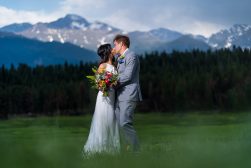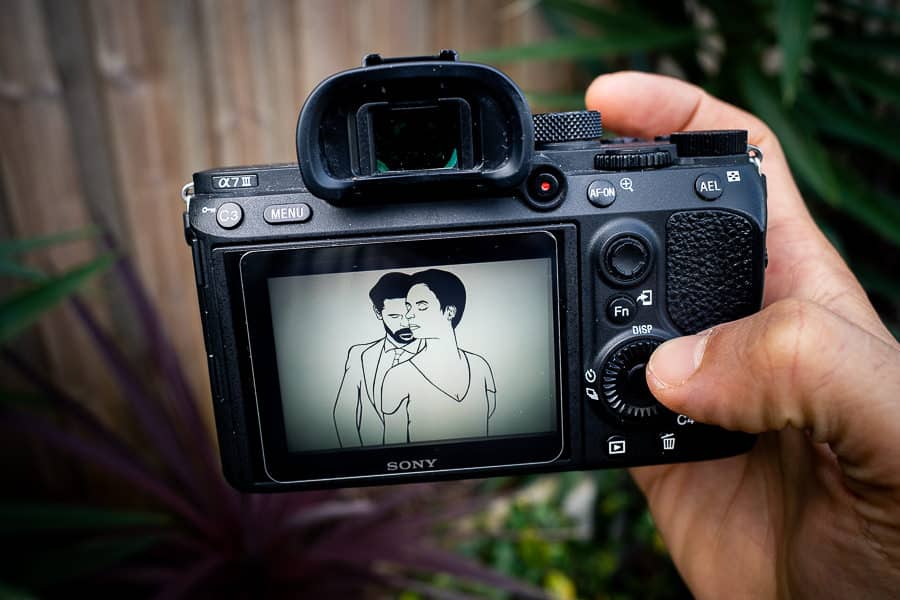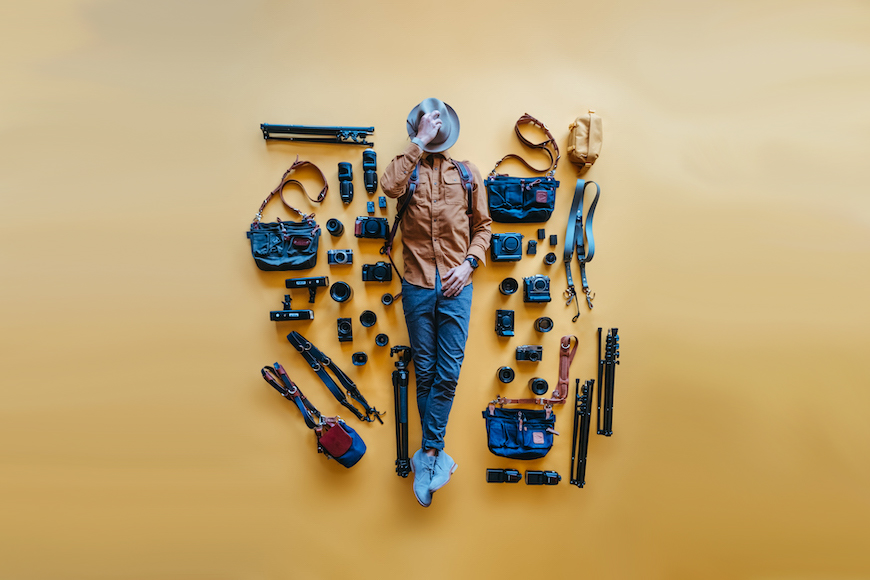

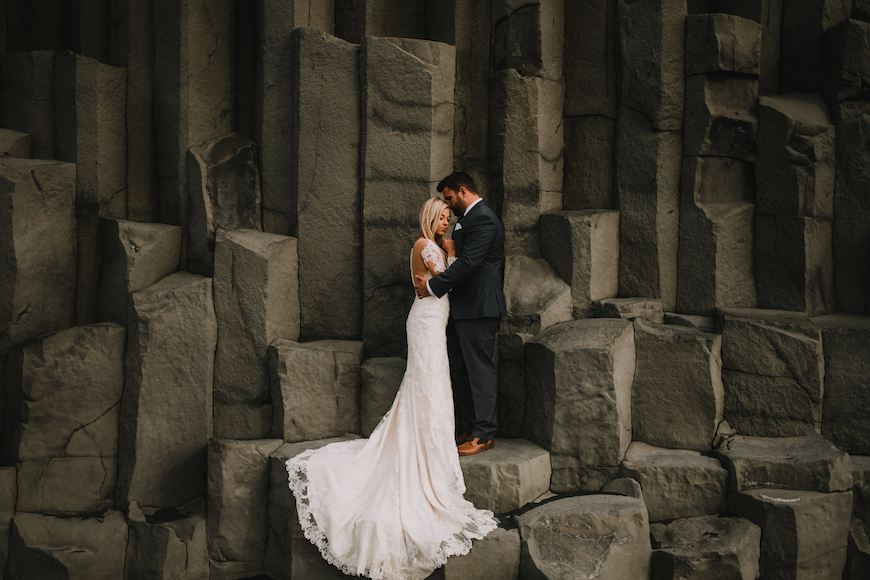

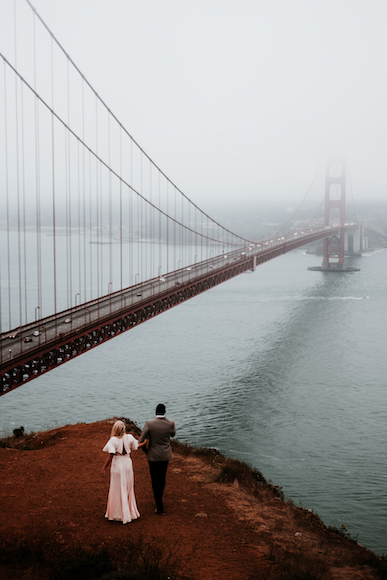

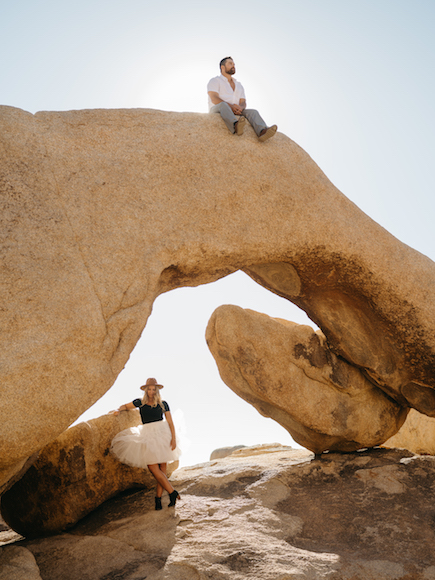



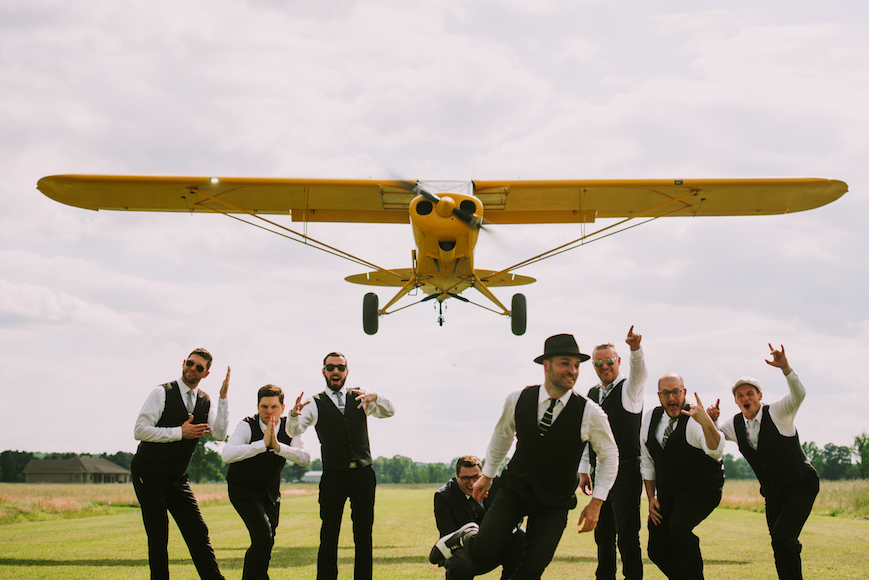
Miles Witt Boyer
Wedding | Last Updated: April 12, 2023
Hey! I’m Miles. I guess Miles Witt Boyer, if you’re in the photo industry.
I’m an Arkansas-based luxury wedding photographer, the founder of a rad photo community called the Photographic Collective, a Fujifilm Global Ambassador, and a partner alongside a few of the coolest photo brands around.
Oh ya, and I host a podcast and executive produce another, all built around helping photographers and videographers develop healthy mindsets and stronger communities.
It’s safe to say after five hundred weddings in forty-two US states and fourteen countries, I’m a bit obsessed with this whole gig, but the truth of the matter is that I genuinely feel like I’m just finding my rhythm.
Cameras
Fujifilm GFX 100S – this is the smaller little brother to the GFX100 (which I also carry). This thing is 102MP of medium format gold. It has the most beautiful color science ever released and has absolutely transformed the way I shoot everything.
These Fujifilm GFX systems aren’t fast, they’re intentional. Asking artists to proactively shoot on purpose instead of to react and spray down a scene.
Between the quality of the files and the change in pace, I can say everything about my work has changed since I first picked up one of these cameras.
Fujifilm GFX50R – this is my favorite camera ever! It’s super slow, absolutely beautiful, and the 50mp medium format file is unbelievable. It was my absolute gateway into medium format digital, and I’ll never completely put it down.
Fujifilm X-T4v – my snappy little buddy. The X series cameras changed the whole industry when they came out ten years ago, and this X-T4 is by far the best. It’s fast, reactive, and packed with the color Fujifilm is so famous for. Its my go-to for quickly changing scenes like dance floors or sporting events.
Fujifilm X100V – my ride or die. This camera never leaves my side. It has shot everything from million-dollar weddings with me to Disney vacations with my kids. It’s an entire professional camera stuffed into the tiniest little body ever.
Lenses
I carry a LOT more lenses, but these are my favorites.
Fujifilm GF63mm f/2.8 – my absolute favorite Fujifilm G series lens! It’s a 50mm full frame equivalent and just sees the world the same way as I do.
Fujifilm GF80mm f/1.7 – the Magic lens. I don’t know how Fujifilm built this lens to feel modern and nostalgic at the same time, but the files through it are always buttery soft in transition with wonderful fall-off but tack sharp in focus.
Fujifilm GF45mm f/2.8 – the 35mm full frame equivalent you have to carry. It’s so sharp and so quick, especially for a medium-format lens.
Fujifilm GF 110mm f/2.0 – the portrait monster. It’s just beautiful, always sharp and perfect.
Fujifilm XF 16mm f/1.4 – I LOVE this X series lens! It’s just great how close I can get with an X series camera and not put off “photographer” vibes, and this lens lets me get right inside the action.
Fujifilm XF 35mm f/2.0 – this is still my favorite X series lens. So reliable and always so sharp. Not to forget, it is so cool looking, something all Fujifilm photographers know matters.
Lights/Triggers
Profoto A10 – I know they are expensive, but it is just the perfect flash!
Godox AD200 – these things are such workhorses. I use them for everything from dance floor lighting to commercial strobes with large modifications, and between the power and the size, they just can’t be beaten.
FotoDiox Sky Filler – the coolest LED panel kit. They’re soft and powerful and so easy to pack down for travel.
Bags/Straps
Holdfast Gear Money Maker – I’ve been on the HF pro team for years, and the Money Maker is the original dual harness. No, seriously – Matt owns the PATENT. Isn’t that rad? I just love the style of these things. I think I have fourteen different versions and colors.
Hands down, my favorite is our new exclusive PHOTOCO edition (we’re the only brand HF has allowed for an exclusive). They come with black straps, chestnut accents, and black hardware, and it’s the perfect way to dress up a suit on a wedding day.
All of my bags are from Holdfast. I love the Roamographer for style points, the Quiver for practicality, and the Sightseer backpack for loading lots of gear. I will even carry the Roamographer Weekender when I’m traveling on the road.
SKB Cases make the only rolling case that I’ve found that has a stand-alone padded bag inside of it. That means that when the flight attendant tries to force you to put your cameras under the plane, you can pop your gear out and hand her the hard case and smile.
Tripods
I carry a Manfrotto, but unless we’re shooting commercial work, I don’t even pack one.
Hardware & Software
I edit everything through Lightroom and Photoshop.
I totally love Luminar and the way they’ve integrated AI to provide seamless editing but not in a takeover kind of way.
Narrative Select and Publish are my BFF; Select helps me cull quickly, and Publish makes sure my blogs are SEO-flexed and look amazing.
I also love Honeybook as a CRM, and Squaremuse is something I am obsessed with for site design.
All of our client work is culled through Pic-Time, and I just adore Archipelago Presets.
There is always a JBL speaker in my bag plus Audio ear pods in my pocket as music is a huge part of my creative process. I love to carry an Instax Printer to wow people a little with the tangible.
I’m a bit of a health nerd, so my Whoop Strap is like a mini supercomputer that tells me when and if I’m pushing myself too hard. There’s almost always a That’s It bar in my case, along with Advil and an energy drink, extra cologne, Altoid Mints, and hair spray.
Final Words
Imagine feeling deserted on an island surrounded by millions of other islands all around you, and your knee deep in water. You simply need to walk through the water to go meet all of the other people. That’s the photo industry these days.
If you’re feeling isolated or buried in comparison and impostor syndrome, or honestly just insecure about whether your work is any good, what you need is community.
Not the old crotchety communities filled with Creative Criticism that just makes you feel stupid and worthless but honest relationships with creatives who see you, care about you and value your perspectives.
The Photographic Collective could totally be that place for you, and it’s free to join – but even if it’s not, find someone. Stop trying to convince yourself that you’re better alone, you’re not. There’s a whole rad, playful, creative world of friends out there waiting for you to show up and have a drink with us.
www.MilesWittBoyer.com | @mileswittboyer
How I Became A Wedding Photographer
I’m sitting here at my desk in Bentonville, Arkansas surrounded by hard drives, memory cards and camera equipment. For the last 15 years my primary income has been as a wedding photographer and it has taken me to some pretty remarkable places. Over 40 states and 10 countries have been my office. Over 600 couples have hired my company to document their big day. I suppose as a creative person perhaps the hardest and maybe the most important thing we can develop over the lifetime of a career is perspective and yet so much of this beautiful job that I get to wake up to every day can feel like habit these days.
That said, there is another side to my career. The side where I step outside of my comfort zone with a camera in my hands and work alongside brands and hundreds of other photographers trying to help them to develop their voices, establish what they think success will look like in their lives, and then pursue this job as a wedding photographer with humility and courage. The audacity that it takes to be a wedding photographer is certainly not lost on me but there is something beautiful about the whispers of moments caught and captured creatively that will always outweigh the applause from my industry or the occasional superfan client. At the end of the day our jobs are as artists and authors blurring the lines between editorial and documentary photography all with the intent on simply serving people in love. What could be more difficult? What could be more fulfilling?
I set off to write this article with a focus in mind. Perhaps I should give three tips, or five. Maybe the advice I should pass along would be best suited with a funny undertone, after all this job can be a bit ridiculous at times. Maybe I should lean into my passion for creating a service-oriented brand that paints our clients as the heroes in every story instead of following the self-serving narrative that most social media personalities seem to embrace. Maybe I’ll talk about how to find camera equipment that feels like it speaks the same language as you, or influences that speak to your soul rather than make you want to copy them.
The bottom line I suppose is that writing an article on “How to become a wedding photographer” is a black hole of options. This isn’t a job for the timid, nor is it a role for the arrogant. This isn’t a great place to get rich quick however I know a lot of brilliant business minds who have used their wedding photography companies to create generational wealth for their families. I suppose the place to start is not all that different from my approach on the wedding day, just start clicking and see where the story takes me.
Humble Beginnings
I attended my first wedding in 2001 as an assistant to a film photographer in Santa Fe, New Mexico. I was given a 35mm Nikon camera, 3 rolls of film, and told that my real job was to hold the big medium format cameras, make sure there were always fresh rolls of film ready, and to carry the embarrassing little fanny pack where used rolls were tagged and stored after they were shot. It was quite literally a different world back then. This wasn’t even really my job, my job at that point as a 15-year-old highschool student with a recent obsession with taking photos of sunsets and flowers was as a lighting tech for this particular wedding photographer’s husband. He was an architectural photographer with an enormous pedigree of awards and magazines behind his name and though I absolutely hated spending days setting up lights for a commercial shoot only to take less than 5 actual photos and pack it all up and head home it seemed to me at the time like that is what real professional photography looked like. I’ll spare you the details of the following 5 years but suffice it to say I didn’t intend to have “wedding photographer” after my name.
After a short period of time in Manhattan working for an agency shooting models and incredibly cool brands I met a girl who would become my wife. A beautiful southern girl with a thick accent that had no intention on living in New York and had a convincing argument spoken through the perfect amount of drawl of why I should not only commit to living in Arkansas (where I had done my undergrad) but also become a wedding photographer. The seed had been planted.
Over the following few years, I’d do everything I could with this degree in photography from a pretty prestigious private school to force my will upon the wedding world. It was an endless arm wrestling match of ego and moment and though I was blessed to have a client list that was willing to hire the young outgoing guy with the cool camera I lived in almost constant impostor syndrome that my work was not nearly as good as my ability to sell it was. That abridged though admittedly not exactly short summary of the first 10 years I held a camera in my life takes us right into the good stuff. The things I wish somebody would have told me right out of the gate about becoming a wedding photographer, the lessons I learned the hard way, and perhaps most importantly the true beauty in calling this job a career.
“It’s not about you.”
“It’s not about you.” I remember calling my wife at a wedding I was having a really hard time with fairly early in my career. I had built a schedule that had essentially just been tossed out the window. I was behind. I was stressed. I wasn’t feeling creative. I was being – “selfish” or so the voice on the other end of the phone reminded me. It was the first time this conversation was had but it was far from the last. The phrase “It’s not your wedding” is this little nugget of wisdom that I’ve heard from that same southern accent over and over. When I complain about the tacky bright pink Hummer limo, when the lighting is a disaster, when we’re behind and I know that I could be documenting something amazing but instead I’m holding on for dear life… It’s not my wedding. It took me a few years to absorb the beauty in that statement and I’m not proud to admit that the first few times it was told to me I rolled my eyes, got off the phone and changed essentially nothing. But the truth is – it isn’t my wedding and though I was hired because of my creativity, or my ability to capture a moment, or maybe my tenacity for life in general learning to cope with the dynamic moments on a wedding day and eliminate the potential battles is something that should happen months in advance. What was I doing wrong? Reacting, often over reacting to circumstances totally out of my control. What I learned in a hurry was that I could help avoid those circumstances altogether by putting in hours and hours of largely unpaid time months in advance. (Don’t worry, I’ll explain how this is a great business model in a bit).
I started to learn to question everything early. Where did the first look come from? Why do couples cut the cake? Why does a groom wear the flower on his left lapel? I needed to know more. I learned to study my craft not simply for the buttons on my camera or the usage of light and composition but context. I became an expert in weddings, not wedding photography and as such I became a powerful resource for my couples. I was capable of helping them with so much more than simply planning this efficient wedding day that the giant three ring binders are built for. I could help them picture it alongside a million stories and experiences that could illustrate my perspective and without even knowing it my value and the value of my work had increased exponentially. Suddenly I found myself with all the time I needed to take the photos I wanted. I wasn’t greeted at the door with “who are you?” but instead a huge hug from clients who were eager to share this day with me! The advice my wife gave me over and over ringing in my ears “It’s not your wedding” had finally hit home. It’s not my wedding, but I have a beautiful role in it.
This takes us totally into what I suppose would be my first little nugget of advice for you, the aspiring wedding photographer or perhaps the seasoned pro, or maybe even just the curious hobbyist. If you want to be in the service industry you have to serve. For me it was learning everything I could about the traditions and history of the events I was shooting, for you it may be something different but there is one thing that I know for a fact. At every single wedding I’ve been to perhaps 90% of the people there will never see the full set of images I deliver. They’ll never see the photography, but they will see the photographer. My composure, my tact, my attire, my relationship with the clients, and my joy will be something that will either build me a room filled with free marketing and beautiful friendships week after week, or will leave a sour taste in the mouths of potentially hundreds of guests who see an anxious, disheveled, unorganized, self-absorbed, panicked human holding the camera at their friend’s most important day.
Dressing The Part
I’ll never forget the first time I wore a suit to a wedding. It was a beautiful high-end event that I was nervous I was a bit over my head to attend. Prior to that wedding, especially in the south in the summer, I was typically in slacks and a black polo with nylon camera straps and black bags that look like they were designed more for the Navy Seals than wedding photographers. I remember this suit being snug, hot, constricting. I didn’t feel comfortable moving, my shoes hurt, and the sun was absolutely brutal. I fought my way through the day and just as the reception started something remarkable happened. The brides’ father grabbed me and said something I wasn’t expecting at all. “Son, I have to thank you for looking so professional for my daughter’s wedding. It says a lot that you try to look more like a guest than a vendor”. It was like taking off sunglasses for the first time. I wandered through the dance floor with a camera in my hands and realized that people weren’t dancing near me, they were dancing for me. I had total access, total acceptance and I was hooked. From that moment on I became obsessed with proximity, even selling off those long 70-200mm lenses and finding myself rarely shooting with anything longer than a 50mm. I had found the golden ticket into the inner circles of these amazingly beautiful days and I realized something so profound. I had spent years shooting the ripples because I wasn’t close enough to see the splash. My photos became more cinematic, more exciting, more dynamic. My couples brought me in as a member of their families, bridal parties included me in every moment as one of them and what had I changed? My clothes. Well – and my perspective.
The truth is it wasn’t really about the clothes at all, it was about what my role is. I realized that the majority of our industry doesn’t even realize that we’re selling a 1st person experience to our couples and then providing a distinctly 3rd person product. What I mean by that is simply that no matter how hard we try to capture the memories of the people we’re hired to photograph, ultimately these aren’t their memories, they can’t be, they’re our photos of their memories. These are our memories of their biggest day and we’re more concerned about our feet, our comfort, and finding a quiet spot on the back wall with a long lens than we are with whether or not when they see these photos they have the same emotional reaction to those moments that they did when they lived them. The simple answer to this barrier of 1st to 3rd person perspective is this.
The closer you can come to documenting your clients from a 1st person perspective the more powerfully they will experience those photos. If I needed to have a suit or a tuxedo on, if I needed to change my approach, my lenses, my lighting, if I needed to be a bit more humble to get there then so be it. The results are not only immediate but have also grown over time. I’ve developed the ability to be a part of a group, to join a family, and to absorb into a tiny society of humans that are all interconnected with the sole purpose of not only documenting their feelings, but actually allowing myself to feel them as well. Regardless of how you do it, you have to find your role. Not your job, your role.
Always Evolving
If you’re following along on this wandering article through a 15-year career as a wedding photographer, or if you’re a member of the Photographic Collective where we host trainings or listen to the podcast or have attended a workshop or any of the other million places my company has branched out over the last few years to serve this industry you’ve likely grasped one key thing. I haven’t even talked about photography yet. You see most of the world and certainly most of your industry wants to quickly ask you to niche yourself into a box. Are you bright and airy or dark and moody? Canon or Sony? Editorial or documentary? Lightroom or Capture1? But the beauty of art is that there are a lot more than simply two colors to choose from. You can carve your own style, your own lane, your own rabid client base filled with people who would do anything, pay anything, and change anything to simply have you at their event, but long before you can develop a style you have to come to one simple realization: the moment you stop evolving is the very moment your business starts to suffocate.
Long before you can develop a style you have to come to one simple realization: the moment you stop evolving is the very moment your business starts to suffocate.
I chose my first camera based on what other people were shooting. And my second. And my third. I spent years watching other photographers create and determining that in order for my work to be valuable I needed to emulate other valuable work. I took workshops on lighting, bought every preset, took every shortcut I could find and ended up realizing I was not only spinning my wheels, I was isolating myself from not only my own creativity but also a community of people because I was terrified people would see me for the impostor I was. My mindset about my work needed to change. After years and years shooting what most people would have said was the best camera system for wedding photographers on the market with a dozen workshops and speaking gigs under my belt and a thriving business I woke up. I didn’t like my own work and what’s worse, I didn’t like the process of creating it. I had distanced myself from other photographers because I didn’t like what I was making, I had given into the muscle memory of the same shot over and over because I knew it was an easy win, and I had totally succumbed to the least common denominator in art: easy.
Find Your Tribe
What came next was a reinvention that I wish I had started with. I set down tens of thousands of dollars of camera equipment for a $600 camera I purchased to be a new vlogging camera. This tiny, light little mirrorless camera didn’t have the tech specs I was used to, it wasn’t impressive, and I only had one tiny lens for it but there was something in my hands I couldn’t set down. Other photographers started asking me about it too and I found myself having conversations with people I had avoided talking to for years. I was suddenly unafraid of the competition of it all and aware that this little camera was creating art alongside me that was unique to me. I had found my own lane and instead of keeping it to myself I found myself eager to share it.
Like a breath of fresh air creatively my work opened up. This little cropped sensor Fujifilm X-T10 was changing my world and it wouldn’t be long before the greatest of things happened, Fujifilm noticed. You see, while most photographers are consumed with self-doubt and unaware of what their trade secrets are, I stumbled into a beautiful truth: we are better together. Community is where creativity flourishes and with this new found love for a brand new camera system and before long a relationship with not only a whole community of other photographers who also loved this same little camera but the brand itself behind me I began finding myself absolutely addicted to meeting new people. I learned to listen, to absorb the sheer power of another creative’s perspective. I learned maybe the most important mantra in business I could ever share with my training groups, my mentees, and my friends: “The more you give away, the more you have to give.”
Suddenly I was outside of my niche. I wasn’t dark and moody, nor was I light and airy. I had finally totally given into a camera system but only because it felt like a creative extension of my arm but everything else wasn’t about choosing left or right, I was just me. I was me but with a we. An army of friends in my direct messages, my inbox, my voicemail calling and just chatting about art and light and color. An army of new clients all trusting me to simply create for them and capture their moments with no direction or instruction but rather just excitement that I was along for the ride with them. An army of new ideas filling up journals and blog posts and instagram captions. An army of confidence that I had finally understood what being a wedding photographer really could mean to myself, my family, my community, and my couples.
I learned maybe the most important mantra in business I could ever share with my training groups, my mentees, and my friends: “The more you give away, the more you have to give.”
I set out to tell you how to become a wedding photographer but perhaps by now, if you’ve made it this far you’ve absorbed a little bit more. I said in an article a few years ago that I had always admired Peter Parker as the photographer just as much as I did him as Spider Man but I think I’m realizing at this point in my career that the two were much more closely connected than I had ever taken time to soak up. Maybe the red spandex and the mask gave Peter the confidence to do the heroic things. Maybe that anonymity protected his family members from villains but Peter wasn’t only a hero when he was dressed up, and he didn’t abandon his creativity when he was in costume. The moment you decide you want to become a wedding photographer is the moment you venture down a dimly lit road filled with seedy shops trying to sell you short cuts but the truth is you already have all you need inside of you to succeed at this, it’s simply learning to have the confidence and the courage to sharpen the right tools in the right order.
Serve people first. Learn to listen. Don’t take photos that other photographers take out of the fear of not being as good as them. Don’t buy gear because a social media ad makes you feel less than you are. Don’t be afraid to dress up, to dance a little, to feel the feelings of the people on the other side of your lens. Capture from a posture of abundance, grace, joy and let the negativity of a world filled with too many opinions and too many insecurities fade into the background and perhaps most importantly, find yourself a community of like-minded people to help keep your head on straight.
That first photo every Saturday may not be an award winner and every sunset may not make it on your website but remember one little whisper “It’s not your wedding” and keep shooting. If you do this job with intention, and you pursue it with passion the dream weddings, the dream clients, and the perfect light will show up eventually; you just have to put in the reps so that you’re ready to do it all justice when it does.








